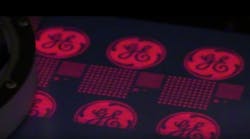A number of summary judgment motions were placed before the court in Boston, and the hearings for these motions concluded on June 2. (A summary judgment is a ruling that a case is not sufficiently strong to go forward to a jury trial). After two days of hearings the judge decided not to rule, and will withhold ruling until he is able to review all the evidence that was placed before him during the last several weeks.
Among this evidence are further affidavits from inventors and manufacturers in the industry which, says Kingstone, substantiate Super Vision’s claims that the Color Kinetics patents rely heavily on prior art. These affidavits can be viewed on the LED Alliance website.
Super Vision's aim is to move the dispute forward to a jury trial. Kingstone says "We hope that we can bring this case before a jury of our peers who will be able to listen to the actual prior art inventors and practitioners from the last four decades in person and make their own conclusion on the outcome of this case."
New affidavits have recently been filed by Brent Brown, inventor and manufacturer of the first LED display commercially sold in the US, and Paul Miller founder of Sunrise Systems, who built his first LED sign in 1979. That sign had a fade in/out command which used ramped pulse-width modulation (PWM) to progressively dim the LEDs. The use of PWM within Color Kinetics' patents is central to the ongoing dispute.
Kingstone says that the affidavits state that the claims made by Color Kinetics and their lawyers and experts about the prior art are incorrect, and that the authors of the affidavits personally employed the vast majority, if not all, the claims made in Color Kinetics' first five patents decades prior to these patent filings.
Super Vision's greatest concern is that "false information" (Kingstone's words) has been asserted to the court – specifically stating that, prior to the first Color Kinetics patent filing date of August, 1997, neither the circuitry nor control methods existed to replace incandescent systems with LED lighting fixtures.
Of course, this is crucial to Color Kinetics' defense of its patents, and in fact Color Kinetics has claimed that it would not be possible to employ the Belliveau/Color Pro patent or device (dating from circa 1990) to light up LEDs without causing the LEDs to burn up.
In response, Super Vision presented a video showing one of its engineers replacing halogen lamps in the patented Color Pro device with LED lamps purchased off the shelf from the internet.




